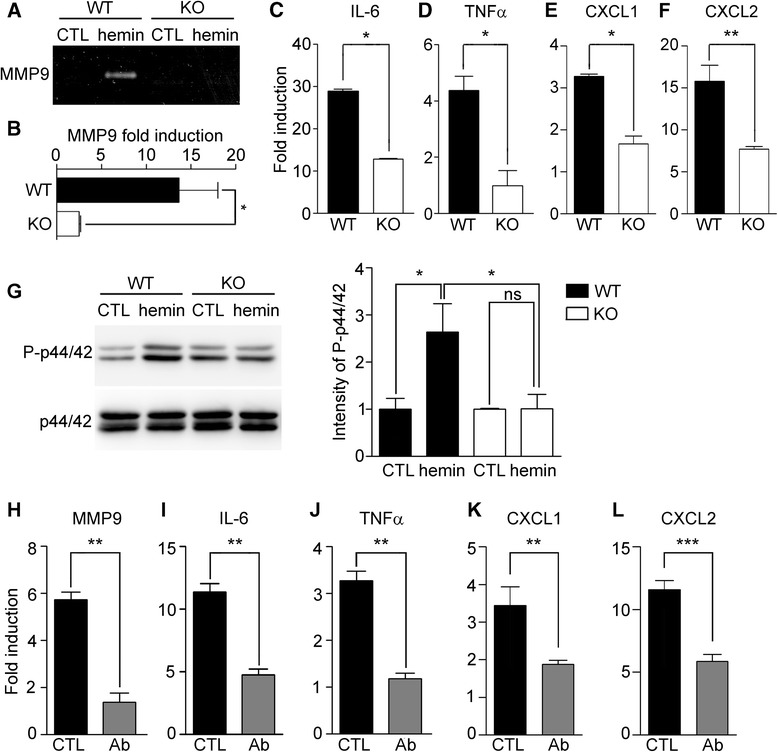Fig. 5.

Hemin functions as an endogenous agonist of TLR2 to induce inflammatory astrocyte activation. Primary astrocytes were prepared from WT and TLR2 KO mice cerebra, and then stimulated with hemin (30 μM). a After 24 h, the cell culture supernatant from each sample was used for gel zymography to measure MMP9 activity. b-f Primary cultured astrocytes were treated with or without 30 μM of hemin for 6 h. Total RNA was prepared and used to measure MMP9 (b), IL-6 (c), TNFα (d), CXCL1 (e), and CXCL2 f transcript levels using real-time RT-PCR. The mRNA levels of the hemin-treated astrocytes were normalized to the levels of the astrocytes without hemin stimulation, and presented as fold induction (* p < 0.05, ** p < 0.01 vs. WT astrocytes, n = 3). g After 30 min of hemin stimulation, total protein extracts were prepared. Phosphorylated-p44/42 (P-p44/42) MAPK and total p44/42 MAPK were analyzed using Western blotting. Representative images are shown. The band intensities were quantified and are presented in the graph on the right (* p < 0.05, n = 3). h-l. Primary astrocytes were stimulated with hemin for 6 h, with or without a 1-h pretreatment with TLR2-neutralizing antibodies. Total RNA prepared from each sample was used to measure MMP9 (h), proinflammatory cytokine (i, j) and chemokine (k, l) transcript levels (**p < 0.01, ***p < 0.001, n = 3). For all graphs, the data are presented as mean ± SEM
